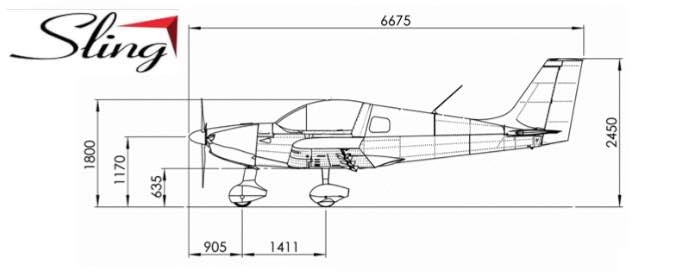After giving things a lot of thought, I finally summoned enough resolve to drill some holes in the aircraft skin, and most, where none had existed before. You’ve got to do what you’ve got to do. Antennas, static ports and bulkhead connectors need holes. Now I’ve got them.
Determining the location of antennas is where most of the thought went. I tried to get the transponder blade antenna pretty close to the fuselage centerline – right in the middle as it turned out. Airframe shading and interference between antennas and other equipment are key concerns. The COM 2 antenna is also on the bottom of the fuselage, just behind the rear wing spar carry-through. I tried to keep it as far away as I could from the the transponder antenna and GMU 11 magnetometer. I didn’t get all of the separation distance called for in various installation documents, but what could I do? This is a tiny little airplane — not a King Air. Time will tell if it’s enough. Build on.
All of the antennas are made by Rami and came along as part of the package with my panel, harness and avionics. Some builders have made rather large doublers. For the moment I’m using only the doublers that came with the antennas. I may eventually go beyond those, but for now, everything is in place.
Of the 14 holes that were already in the ELT mounting tray, none were where I wanted them to be. I made 4 more in the tray that allow 4.0 x 10mm rivets, through the fuselage skin and into the tray, without interfering with the plastic case of the ELT itself.
I made an airframe ground lug from a 5/16″ brass bolt and installed it at the location where the KAI called for a 12 AWG avionics ground bus wire to be passed through a grommet in the firewall on it’s way to the negative battery terminal. I’ve decided to have a 10 AWG cable for the avionics ground bus to the lug (inside) and a 4 AWG cable from the same lug, on other side of the firewall, to the battery. I plan to attach a 6 AWG engine [starter] ground cable to the lug as well.
Rubber fuel lines penetrating the firewall through ordinary grommets, as the kit assembly instructions (KAI) call for, didn’t float my boat. I’ve gone with AN6 bulkhead fittings for the fuel supply and return lines. These fittings need smaller holes than the ones pre-punched in the firewall by the factory. I designed and fabricated a doubler out of steel and riveted over the original holes. The fittings are mounted there.
A set of step-drills is absolutely essential for making holes in sheet metal. I’ve got a cheap set but they’ve worked well.
I’ve set M6 rivnuts (with some JB Weld epoxy for good measure) in the fuselage rib, behind the parachute compartment, where the Rotax ECU goes. Getting the 3 large engine wire bundles and connectors in place, given the minimal space remaining with the LRU rack mounted, is going to be super tight. Fingers crossed.
As long as I had rivnuts and JB Weld handy, I decided to rework the Andair Duplex Fuel Selector valve to receive M4 rivnuts and then set them in place. These steps are called out in the KAI.
My factory quick-build fuselage came with not one – but two – static ports in the rear fuselage. However, the factory now says not to use them. They’ve also said they haven’t officially decided where the new location(s) should be either. They think it’s going to be finalized “soon” and anticipate that it’s going to be just in front of the fresh air NACA duct near the front of the fuselage. They sent me a picture and I’ve gone with that location.
The outside air temperature probe found its home in the LH fresh air NACA duct.
